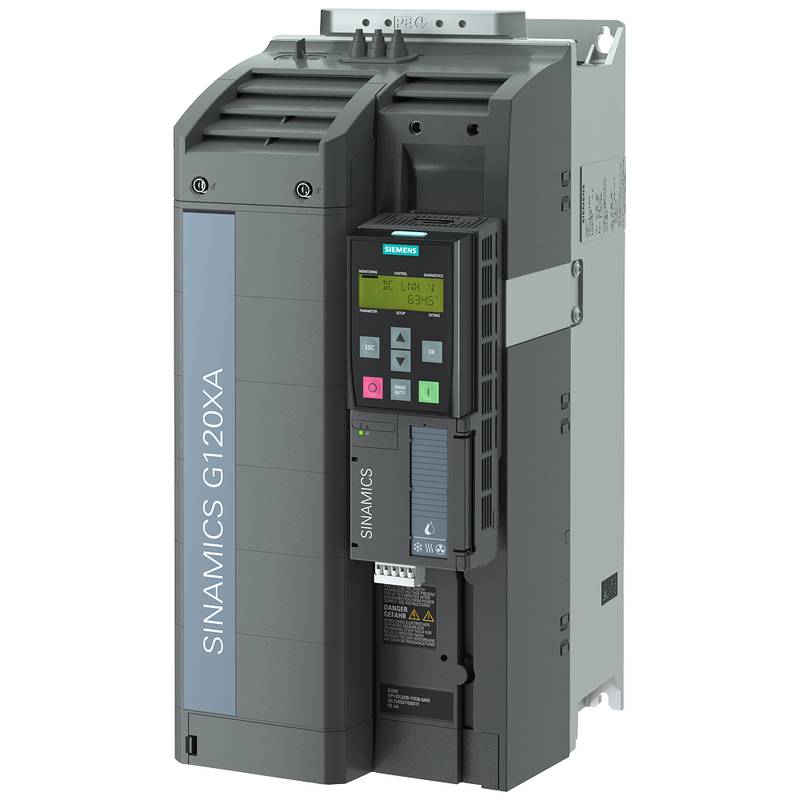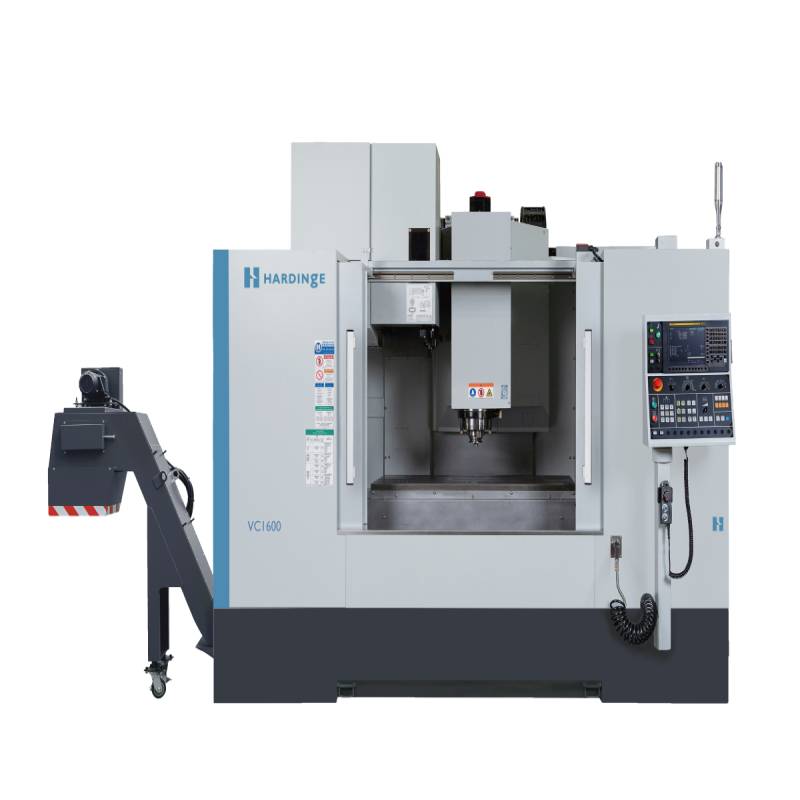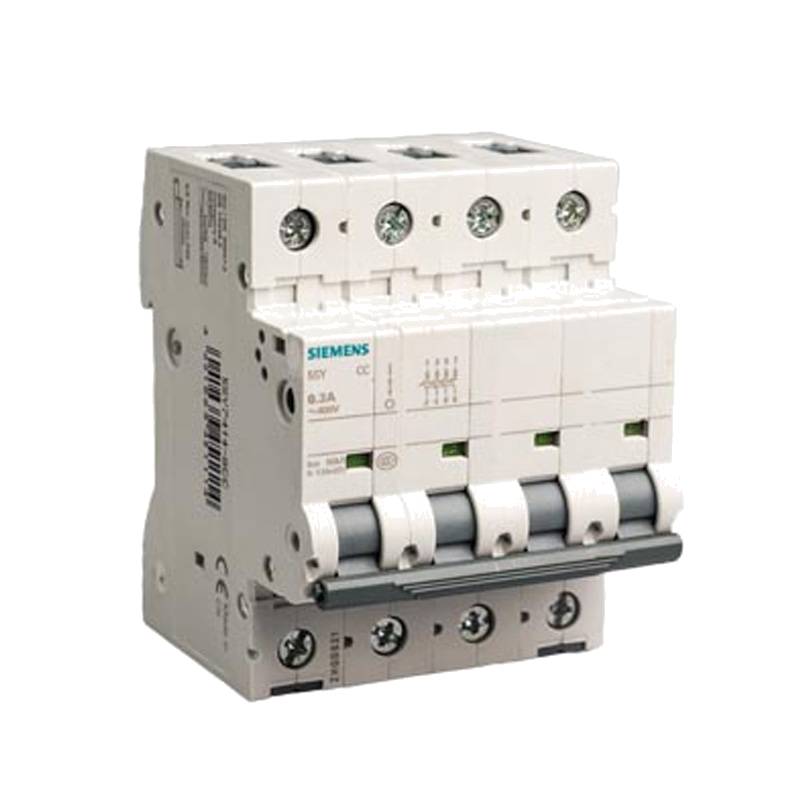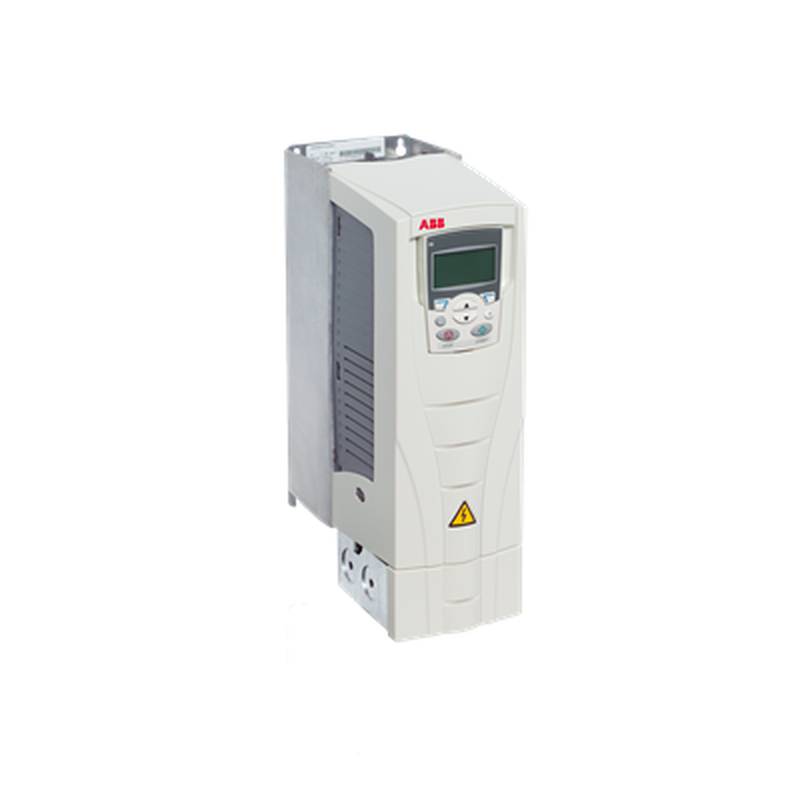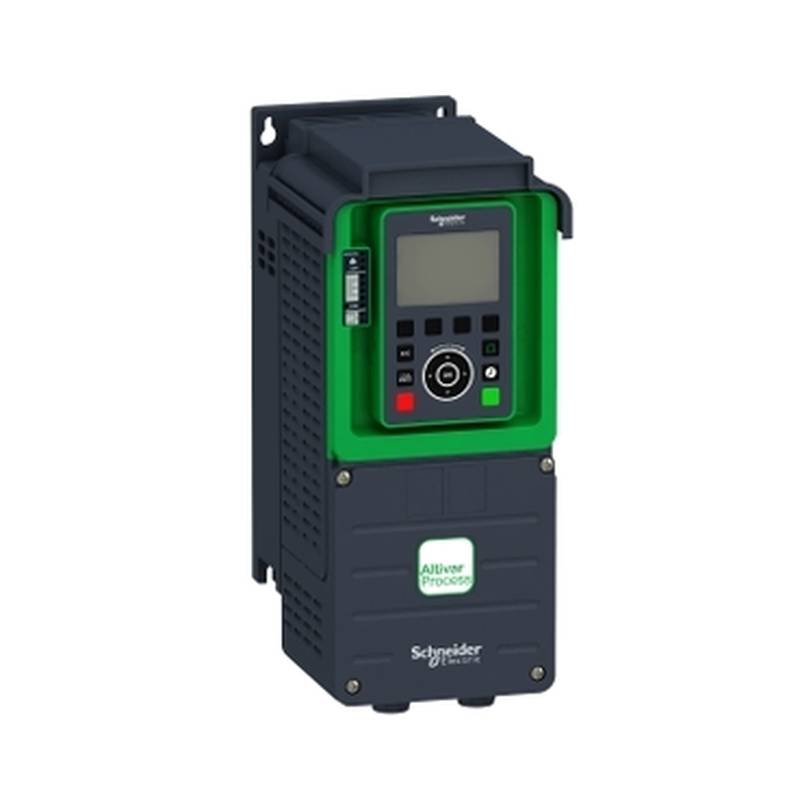
The YASKAWA CH70B4039ABBA CH700 Advanced Frequency Drive stands as a robust solution for precise motor control, boasting a 39A current rating and 18.5kW power output. Its advanced capabilities, including sophisticated drive control algorithms and robust protection features, position it as a highly reliable component for demanding industrial applications. Key technical specifications include a 400V class voltage rating and an IP20 enclosure, ensuring efficient and safe operation in various environments. This drive is engineered for superior performance, energy efficiency, and extended equipment lifespan, making it a valuable asset for optimizing industrial processes.
Product Specifications
| Feature | Specification |
| :---------------------- | :--------------------------- |
| Model Number | CH70B4039ABBA |
| Series | CH700 |
| Rated Current (A) | 39 |
| Rated Power (kW) | 18.5 |
| Voltage Class (V) | 400 |
| Enclosure | IP20 |
| Control Method | V/f, Vector Control |
| Input Voltage (V) | 380-480 |
| Output Frequency (Hz) | 0-400 |
| Ambient Temperature (°C)| -10 to 50 (with derating) |
Core Features & Market Positioning
The YASKAWA CH70B4039ABBA CH700 drive distinguishes itself through its advanced control algorithms, offering both V/f and sophisticated vector control modes to precisely manage motor speed and torque across a wide range of applications. This flexibility ensures optimal performance for various loads, from simple fan and pump applications to more demanding variable torque and constant torque scenarios. Its robust design incorporates advanced thermal management and comprehensive protection functions, including overcurrent, overvoltage, and undervoltage protection, safeguarding connected equipment and ensuring operational continuity. The CH700 series is recognized for its reliability and YASKAWA's commitment to quality, positioning it as a preferred choice for engineers and system integrators seeking durable and high-performing variable frequency drives.
Key Application Scenarios
Engineered for versatility, the YASKAWA CH70B4039ABBA CH700 drive finds extensive application in sectors requiring precise motor speed and torque control. It is particularly well-suited for industrial fans and pumps, where variable speed operation significantly enhances energy efficiency and reduces operational costs. Furthermore, its robust performance makes it ideal for material handling systems, conveyors, and processing machinery in manufacturing and automation environments. The drive's ability to handle demanding loads also extends its utility to applications like extruders, mixers, and compressors, where consistent and controlled motor operation is paramount for product quality and process stability.
Practical System Integration Guidance
Integrating the YASKAWA CH70B4039ABBA CH700 drive into existing systems involves careful consideration of power, control, and communication wiring. Ensure the main power input aligns with the 380-480V range and that appropriate circuit protection, such as fuses or circuit breakers, is installed upstream. For motor connections, utilize shielded motor cables to minimize electromagnetic interference and follow the drive's terminal designations for accurate connections to the motor. Programming the drive typically involves setting key parameters like motor nameplate data (e.g., rated voltage, current, frequency, speed) and selecting the appropriate control mode (V/f or vector). Accessing the parameter menu via the drive's keypad or through YASKAWA's configuration software facilitates efficient setup and customization for specific application requirements.
Operation and Risk Mitigation
Safe operation of the YASKAWA CH70B4039ABBA CH700 drive mandates adherence to electrical safety standards and proper installation procedures. Always ensure the drive is de-energized before performing any wiring or maintenance. The drive incorporates comprehensive fault codes to aid in diagnostics; for instance, an "OL" (Overload) fault typically indicates the motor is drawing more current than the drive is programmed to allow, often due to mechanical issues or incorrect parameter settings. Similarly, an "UV" (Undervoltage) fault suggests an issue with the incoming power supply, while an "OV" (Overvoltage) fault points to a power surge. Consulting the official YASKAWA CH700 manual for specific fault code explanations and troubleshooting steps is critical for safe and effective operation and prompt resolution of issues.
Scalability & Long-Term Value
The YASKAWA CH70B4039ABBA CH700 drive offers significant long-term value through its compatibility with various industrial communication networks and its inherent reliability. It supports common fieldbus protocols, enabling seamless integration into broader automation systems and facilitating data exchange for monitoring and control within an Industrial Internet of Things (IIoT) framework. This modularity allows for future upgrades and expansion of control capabilities without requiring a complete system overhaul. YASKAWA's reputation for product longevity and robust support further contributes to the drive's sustained value, ensuring that it remains a dependable component in evolving industrial landscapes and can be easily incorporated into next-generation smart factory initiatives.
Frequently Asked Questions
How do I reset a fault on the YASKAWA CH70B4039ABBA CH700 drive?
To reset a fault on the YASKAWA CH700 drive, first identify and rectify the underlying cause of the fault. After addressing the issue, press the "Reset" button on the drive's keypad. If the fault persists, consult the drive's manual for specific error code information and troubleshooting steps.
Ensure the drive has been de-energized and then re-energized after the fault condition is cleared. This two-step process often resolves temporary communication or power fluctuation errors. Always verify that the reset action is appropriate for the specific fault code displayed.
For persistent faults, a hard reset might be necessary, which often involves power cycling the drive after ensuring all parameters are correctly set and the cause is eliminated. Refer to the detailed YASKAWA CH700 service manual for advanced reset procedures.
What is the maximum motor size compatible with the YASKAWA CH70B4039ABBA CH700 drive?
The YASKAWA CH70B4039ABBA CH700 drive is rated for 18.5kW (25 HP) at 400V, which directly corresponds to the maximum motor power it can safely and effectively control. This rating ensures optimal performance and protection for motors within this power range.
When selecting a motor, consider not only the power rating but also the motor's full load current. The drive's 39A continuous current rating must be greater than or equal to the motor's rated full load current to prevent nuisance tripping or damage.
Always consult the motor's nameplate and the YASKAWA CH700 drive's detailed specification sheet to confirm compatibility, especially for motors operating at the edge of the drive's capabilities or with special characteristics.
Can the YASKAWA CH70B4039ABBA CH700 drive be used for constant torque applications?
Yes, the YASKAWA CH700 drive, model CH70B4039ABBA, is capable of driving motors in constant torque applications using its advanced vector control mode. This mode provides precise torque regulation at all speeds, including zero speed under certain conditions.
Constant torque applications require the drive to deliver consistent torque regardless of speed variations, such as those found in mixers, extruders, or hoists. The CH700's vector control is designed to meet these demanding requirements effectively.
Ensure the drive parameters are correctly configured for constant torque operation, including setting the appropriate slip compensation and torque boost levels based on the motor characteristics and application load.
What are the typical wiring requirements for the YASKAWA CH70B4039ABBA CH700?
The YASKAWA CH70B4039ABBA CH700 requires proper wiring for power, control, and motor connections. Main power input should connect to the L1, L2, and L3 terminals, respecting the 380-480V AC range. Control terminals require appropriate wiring for digital inputs, analog inputs, and relay outputs as per the application.
Motor connections should be made to the U, V, and W terminals, utilizing shielded motor cable to mitigate electromagnetic interference, especially in noisy electrical environments. Grounding connections are critical for safety and performance.
Referencing the specific wiring diagrams in the YASKAWA CH700 installation manual is essential to ensure correct connections for all terminals, preventing damage to the drive and connected equipment.
How is energy efficiency improved with the YASKAWA CH700 drive?
Energy efficiency is significantly enhanced by allowing motor speed to be precisely controlled according to the actual load requirements, rather than running at full speed constantly. This variable speed operation, particularly for fans and pumps, reduces energy consumption dramatically.
The CH700 drive's advanced control algorithms, including V/f and vector control, optimize motor performance and minimize energy losses. By matching motor output to demand, the drive prevents over-consumption of electricity, leading to substantial cost savings over time.
Furthermore, features like an energy-saving mode and harmonic mitigation capabilities contribute to overall system efficiency and reduced electrical waste. These aspects make the YASKAWA CH700 a cost-effective and environmentally conscious choice for industrial applications.
What safety features are built into the YASKAWA CH70B4039ABBA CH700?
The YASKAWA CH70B4039ABBA CH700 drive is equipped with comprehensive built-in protection functions. These include overcurrent, overvoltage, undervoltage, overload, and overheat protection for both the drive and the motor, ensuring safe operation.
It also features a Safe Torque Off (STO) input, a critical safety function that electronically disconnects the motor's power when activated, preventing unexpected starts and ensuring operator safety during maintenance or emergency stops.
Adherence to proper installation practices, including correct grounding and use of appropriate circuit protection, further enhances the safety profile of the drive. Always refer to the manual for detailed safety guidelines.
Can this drive be programmed remotely?
Yes, the YASKAWA CH70B4039ABBA CH700 drive can be programmed remotely, particularly when integrated with a compatible communication network. It supports various fieldbus protocols, allowing for remote parameter setting, monitoring, and control via SCADA systems or PLCs.
YASKAWA also offers optional accessories and software tools that facilitate remote configuration and diagnostics. These tools enable engineers to adjust settings, troubleshoot issues, and update firmware without needing direct physical access to the drive.
For remote programming, ensure that the drive is equipped with the necessary communication option card and that the network infrastructure is properly established and secured to maintain reliable and safe remote operation.
What is the operating temperature range for the YASKAWA CH70B4039ABBA CH700?
The YASKAWA CH70B4039ABBA CH700 drive is designed to operate within an ambient temperature range of -10°C to 50°C (14°F to 122°F). However, operation at the higher end of this range may require derating of the drive's output current.
Derating is necessary to prevent the drive's internal components from overheating, especially during extended periods of high load operation. Always consult the drive's technical manual for specific derating curves and guidelines based on ambient temperature and load conditions.
Proper ventilation and cooling are crucial for maintaining the drive within its specified operating temperature limits, ensuring longevity and reliable performance. Avoid installing the drive in excessively hot or poorly ventilated areas.
How does the CH700 drive handle motor tuning?
The YASKAWA CH700 drive features an auto-tuning function that automatically detects and configures motor parameters for optimal performance, especially when using vector control. This process simplifies setup and enhances drive efficiency.
During auto-tuning, the drive sends signals to the motor to measure its electrical characteristics, such as resistance and inductance. It then uses this data to adjust internal parameters for precise torque control and speed regulation.
For best results, ensure the motor is connected and the drive is programmed with basic motor nameplate information before initiating the auto-tune sequence. A successful tune provides optimal responsiveness and energy efficiency for the connected motor.
What are the benefits of using vector control over V/f control on this drive?
Vector control provides superior motor performance by independently controlling both the voltage and frequency applied to the motor, allowing for precise management of torque and speed. This results in faster dynamic response, higher starting torque, and better speed regulation.
In contrast, V/f control maintains a fixed ratio between voltage and frequency, which is simpler but less precise, especially under varying load conditions. Vector control is thus preferred for applications requiring high accuracy, such as positioning systems or those with rapidly changing loads.
While V/f control is suitable for simple applications like fans and pumps where precise torque control isn't critical, vector control on the YASKAWA CH700 drive offers enhanced efficiency, better transient response, and overall improved motor performance for more demanding industrial tasks.
















